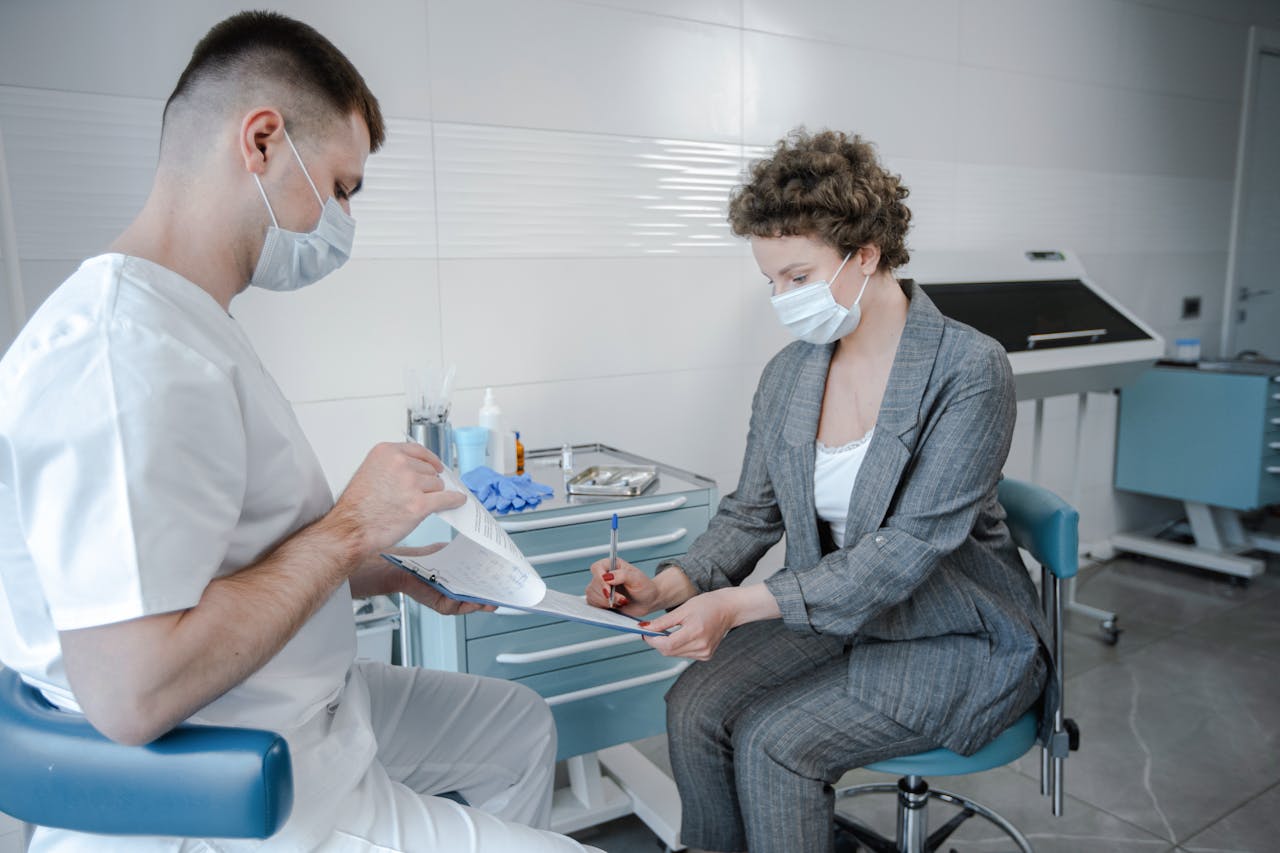How to Prevent New Patient No-Shows at Your Dental Practice

New patient no-shows devastate practice revenue and disrupt carefully planned schedules, but the right combination of technology, communication strategies, and systematic processes can reduce your no-show rate from double digits to under 1%. This comprehensive guide reveals proven tactics that leading dental practices use to ensure new patients show up for their first appointment.
Key Takeaways
- New patient no-shows cost dental practices $20,000-70,000 annually per provider, with new patients showing 24% no-show rate
- Automated reminder systems reduce no-shows by 25-41%, with text messages achieving highest engagement
- Requiring deposits for high-value appointments virtually eliminates no-shows while generating upfront revenue
- AI predictive analytics achieve 80-86% accuracy in identifying high-risk patients for targeted interventions
- Practices implementing comprehensive strategies have reduced no-show rates from 20% to under 1%
- Multi-channel communication combining text, email, and phone calls outperforms single-channel approaches
The True Cost of New Patient No-Shows
Every empty chair in your schedule represents lost revenue that compounds over time. New patients demonstrate particularly high no-show rates at 24%, significantly exceeding rates for established patients. With average revenue per patient of approximately $259, a single daily no-show translates to $20,000-70,000 in annual lost revenue.
The financial impact extends beyond the immediate appointment. Staff productivity suffers, schedule gaps create inefficiencies, and the lifetime value of that lost patient—estimated at $10,000 or more—vanishes. For practices already struggling with rising operational costs, these losses prove particularly devastating.
Understanding Why New Patients Miss Appointments
Psychological Barriers
Dental anxiety affects 30-80% of the population worldwide, with 12% experiencing extreme fear. New patients face unique vulnerabilities:
- No established trust relationship with the practice
- Uncertainty about procedures and costs
- Heightened anxiety about unknown environments
- Fear of judgment about oral health status
Practical Obstacles
Research identifies the most common practical barriers:
- Personal health issues (30.7%)
- Work schedule conflicts (14.7%)
- Transportation problems (12.3%)
- Insurance confusion and coverage concerns
- Forgetting appointments despite good intentions
Understanding these root causes enables targeted interventions that address specific patient concerns before they result in no-shows.
Technology Solutions That Deliver Results
Automated Reminder Systems
Modern reminder platforms achieve remarkable success, reducing no-shows by 25-41%. The optimal reminder sequence includes:
- Initial confirmation immediately after booking
- One-week advance reminder
- 2-3 day advance reminder
- 24-hour final confirmation
82% of text messages are read within five minutes, making SMS the most effective reminder method. Practices using comprehensive platforms report significant improvements in attendance rates and reduced administrative burden.
AI-Powered Predictive Analytics
Machine learning models now achieve 80-86% accuracy in identifying patients likely to miss appointments. These systems analyze:
- Lead time between scheduling and appointment
- Previous no-show history
- Demographic risk factors
- Day of week and time patterns
This enables practices to deploy intensive reminder protocols selectively for high-risk patients while reducing front desk workload.
Online Scheduling Platforms
80% of patients prefer to make healthcare appointments online, with 70% of healthcare providers expected to offer self-scheduling options. Practices offering 24/7 online booking report 24% increase in call volume due to improved patient engagement and accessibility.
Proven Tactical Interventions
Strategic Deposit Policies
Requiring $75-100 deposits for appointments longer than one hour virtually eliminates no-shows. Key implementation strategies:
- Apply to new patients and high-value procedures
- Offer graduated refund policies for advance cancellations
- Exempt reliable long-term patients to maintain goodwill
- Accept deposits via multiple payment methods
Waitlist Management
Advanced platforms fill cancelled slots in as little as 3 minutes through automated notifications. Digital solutions enable one-click booking from text messages, helping practices maximize schedule utilization and capture revenue from last-minute openings.
Communication Timing Optimization
Research identifies 2-3 days before appointments as the optimal primary reminder window. A few weeks ahead typically gets the most patient confirmations, as it's close enough to remember but provides adequate planning time. Multi-channel approaches combining text, email, and phone calls based on patient preferences consistently outperform single-channel strategies.
Building Pre-Appointment Engagement
Welcome Call Protocols
Quality welcome calls directly correlate with show rates. Successful scripts include:
- Warm greeting expressing excitement about the new patient
- Clear explanation of first visit expectations
- Insurance verification and financial discussion
- Opportunity to address concerns or questions
These calls establish relationships that improve patient satisfaction while reducing anxiety-driven cancellations.
Digital Onboarding
Practices using digital intake save thousands of hours annually in data entry. Digital platforms enable immediate form delivery post-scheduling, with patients who complete forms showing significantly higher attendance rates.
Educational Content
Providing educational materials about procedures reduces uncertainty. Video content proving particularly effective for:
- Virtual office tours reducing first-visit anxiety
- Procedure explanations clarifying expectations
- Team introductions building familiarity
- Patient testimonials providing social proof
Recovery Strategies for No-Shows
Immediate Follow-Up
Contact within five minutes of missed appointments achieves highest recovery rates. Effective scripts express concern first—"We had you scheduled for 2 PM today. Are you okay?"—before addressing rescheduling.
Win-Back Campaigns
Systematic outreach to lost new patients achieves 30% conversion rates when clinicians make calls directly. Combining empathy with specific treatment recommendations creates urgency while maintaining professionalism.
Barrier Resolution
Proactive questioning during rescheduling uncovers obstacles enabling targeted solutions:
- Payment plans for financial concerns
- Sedation options for anxiety
- Flexible scheduling for work conflicts
- Transportation assistance partnerships
Why Arini Stands Apart for No-Show Prevention
While numerous solutions exist for appointment reminders, Arini delivers a comprehensive AI-native patient engagement platform specifically designed to convert no-shows to confirmed visits.
Arini's unique approach combines:
- Customizable Intake Workflows: Separate flows for new versus existing patients with dynamic questionnaires that build commitment
- Intelligent Outbound Campaigns: Convert recall lapses to reactivated patients through automated phone outreach at optimal evening times
- Multi-Channel Sequencing: Build complex workflows like "Text 5 days before, call 3 days before if unconfirmed, alert front desk day-of"
- Deep PMS Integration: Real-time scheduling in Dentrix, Eaglesoft, and Open Dental prevents double-booking while improving scheduling speed
Unlike basic reminder systems, Arini's white-glove onboarding team programs your AI receptionist to mirror your exact front desk procedures. This ensures new patients receive consistent, personalized communication that reduces missed call rates while building the trust necessary for appointment attendance.
Learn more about Arini's enterprise solutions or book a demo to see how practices are achieving sub-1% no-show rates.
Implementation Roadmap
Month 1: Foundation
- Deploy automated reminder system
- Establish deposit policies for high-value appointments
- Create digital waitlist management
Month 2: Enhancement
- Implement welcome call protocols
- Launch digital onboarding platform
- Train staff on confirmation scripts
Month 3: Recovery
- Develop immediate no-show follow-up process
- Create win-back campaign templates
- Establish barrier resolution protocols
Month 4-6: Optimization
- Deploy predictive analytics
- Launch patient reactivation campaigns
- Continuously refine based on data
Success Metrics to Track
Monitor these key performance indicators:
- No-show rate reduction (target <2%)
- Revenue recovery from waitlist fills
- Patient satisfaction scores
- Cost per appointment booked
- Staff time saved through automation
Regular team reviews of metrics enable continuous improvement while celebrating wins maintains momentum for sustained success.
Frequently Asked Questions
What's the single most effective strategy to reduce new patient no-shows?
Automated text message reminders combined with deposit requirements for high-value appointments prove most effective. Practices implementing both strategies report 70-95% reduction in no-show rates. The key is deploying reminders at optimal times (2-3 days and 24 hours before) while requiring financial commitment for lengthy procedures.
How much should we invest in no-show prevention technology?
Small practices typically invest $200-400 monthly for comprehensive solutions, with documented ROI timelines of 3-6 months. Given that one daily no-show costs $20,000-70,000 annually, even expensive enterprise solutions at $1,000+ monthly deliver compelling returns. Focus on platforms offering automated reminders, online scheduling, and waitlist management as core features.
Should we charge no-show fees to new patients?
Industry-standard policies require 24-48 hour advance notice with $45-75 fees for violations. However, implement graduated consequences for new patients—first offense warnings followed by fees for repeat violations. This maintains accountability while building relationships. Always allow emergency exceptions and consider waiving fees when patients reschedule immediately.
How do we handle anxious new patients who frequently cancel?
Address anxiety proactively through pre-appointment engagement. Send virtual office tours, offer sedation consultations, and have your calmest team member make welcome calls. Consider scheduling these patients at less busy times when you can provide extra attention. Research shows that acknowledging and addressing dental anxiety directly reduces cancellation rates significantly.
What's realistic for our no-show rate target?
While top performers achieve under 1% no-show rates, the American Dental Association recommends targeting 5% or less. With industry averages at 15%, even reducing to 7-8% delivers substantial financial impact. Set initial goals of 50% reduction from your baseline, then continuously improve toward best-in-class performance.









